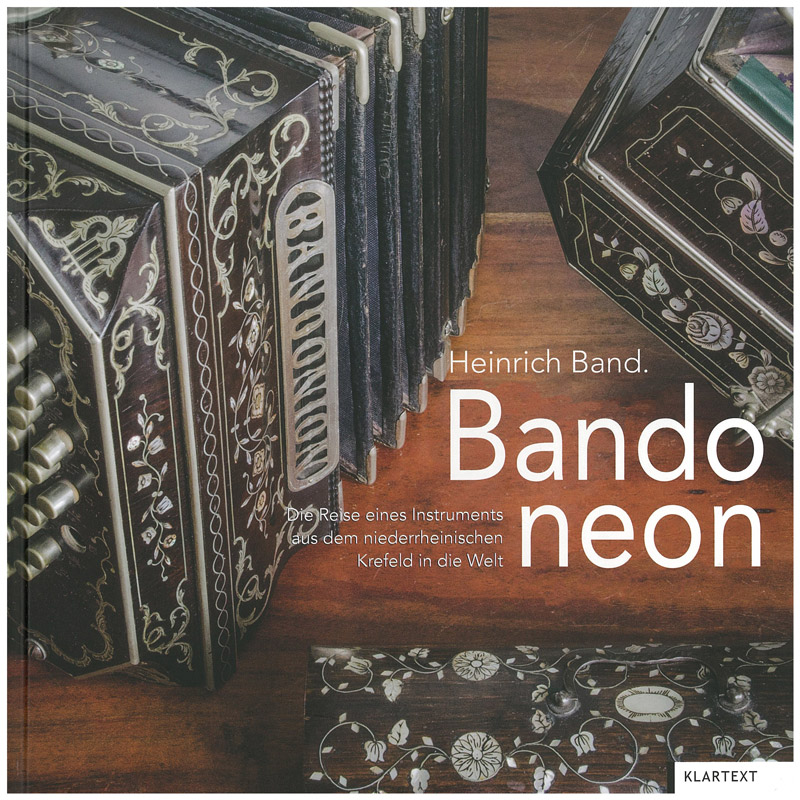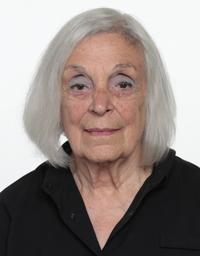Heinrich Band: Namesake, But Not Inventor of the Bandoneon

The cradle (beginnings) of the bandoneon or those German Concertinas that were later called bandonions is situated in the town of Carlsfeld (Saxony) in the Ore Mountains (Erzgebirge). After Carl Friedrich Uhlig (1790–1874) developed the first German Concertina in Chemnitz in 1834, it was Carl Friedrich Zimmermann (1817–1898) who started producing German Concertinas in the attic of his parents’ house in Carlsfeld around 1840, further developed them and some few years later invented an instrument that later became known and sold worldwide under the name “Bandonion.” This is a fact about which there is no doubt in the general public as well as among experts and which has been historically proven. Until recently! A specialist book, which has been available on the German market since May 15, 2020, states with remarkable explicitness that Krefeld merchant Heinrich Band (1821–1860) invented the bandonion and subsequently makes the city of Krefeld the instrument’s birthplace. Under the title “Heinrich Band. Bandoneon” (subtitle: “Die Reise eines Instruments aus dem niederrheinischen Krefeld in die Welt” [The journey of an instrument from Krefeld, Lower Rhine, into the world]), it is both the “Förderverein für das Kulturbüro der Stadt Krefeld e.V.” [Sponsoring Society for the Cultural Office of the Krefeld] as editor and Janine Krüger as author who propagate this in a colorful and lavishly produced book. The book was published by Klartext Verlag, Essen, and financially opulently supported by “Sparkassen Kulturstiftung Krefeld,” [the savings bank cultural foundation] “Stadt Krefeld,” [City of Krefeld] the “Kunst Stiftung NRW” [Art Foundation North Rhine-Westphalia] and the “Kulturbüro Krefeld” [Cultural Office of Krefeld] as well as the “Förderverein für das Kulturbüro der Stadt Krefeld e.V.” (the association is at the same time the editor and financial supporter itself); further backed by Klaus Kokol (Krefeld city council member, deputy Social Democratic Party of Germany parliamentary group leader, director of the legal department) and Jürgen Sauerland-Freer (former head of Krefeld’s culture department and predecessor of Dr. Gabriele König). According to the masthead (title information), besides the editor and author is an editorial staff, which includes Prof. Gerhard Hahn (an engineer, sculptor and designer based in Krefeld), Dr. Gabriele König (head of Krefeld’s Culture Department as well as head of the city’s Culture Office) and Burkhard Ostrowski (Krefeld culture office employee). Thus, there is a concentrated municipal energy in the background. The fact that local patriotism and cultural enthusiasm for the city go so far that music history is “bent” in order to attract even more public attention and publicity, is not only outlandish but also reprehensible. But above all, it is completely unnecessary. To be sure, the name “bandonion” actually derives from the Krefeld family name of Heinrich Band. But apart from the fact that this instrument name did not originate from Band himself, but from a third party, Band has demonstrably never been an instrument manufacturer, but no more and no less was one of several music dealers who bought various instruments from different manufacturers and sold them to their customers. The relevant professional music circles stood on their heads by this snubbing presumption, especially inasmuch as the editors and local politicians not only leave it misrepresented in their book, but use all available types of media exploitation (advertising videos, launched newspaper releases, internet articles, radio reports, etc.) to pursue their historical fact suppression bluntly and widely.
Heinrich Band. Bandoneon (“Förderverein für das Kulturbüro der Stadt Krefeld e.V.” as editor and Janine Krüger as author), in German language only. ISBN 978-3-8375-1970-9 - format 23 x 23 cm - 368 pages - four-color throughout with numerous photos and illustrations - hardcover, thread stitching - price 29.95 euros - circulation: 700 copies. Ulrich Schmülling, July 15th 2020 (picture above)
Article about: Willoughby Ann Walshe 80th Birthday, Kamen - Germany http://www.accordions.com/news.aspx?d=21-Apr-2017&lang=en#art12985 |

PDF file: Excerpt from Research by Norbert Seidel about Invention of Bandoneon in German











|
Site
constructed and hosted by: Accordions Worldwide at www.accordions.com.
© Copyright 2020 Accordions Worldwide. All rights reserved |
 It is to be hoped that this does not result in what is widespread in today’s society, namely that untruth becomes truth if it is repeated only loudly and often enough.
It is to be hoped that this does not result in what is widespread in today’s society, namely that untruth becomes truth if it is repeated only loudly and often enough.